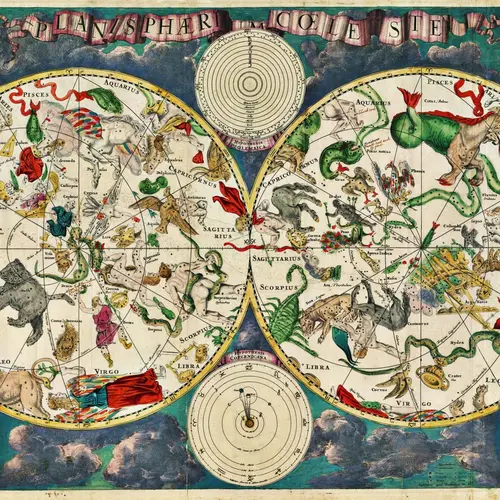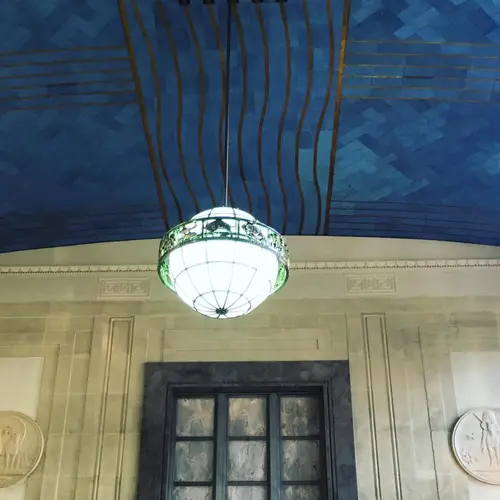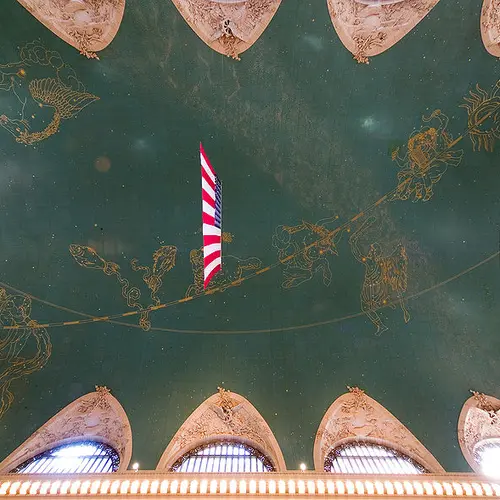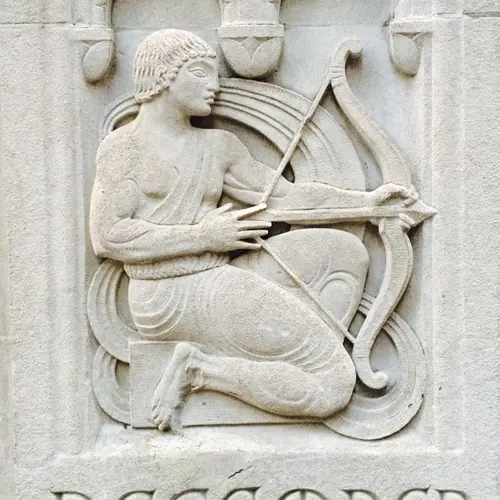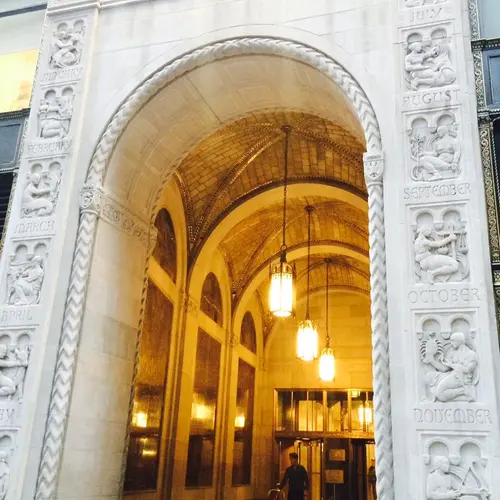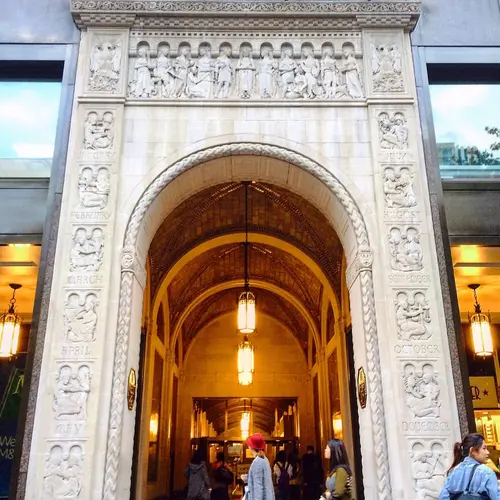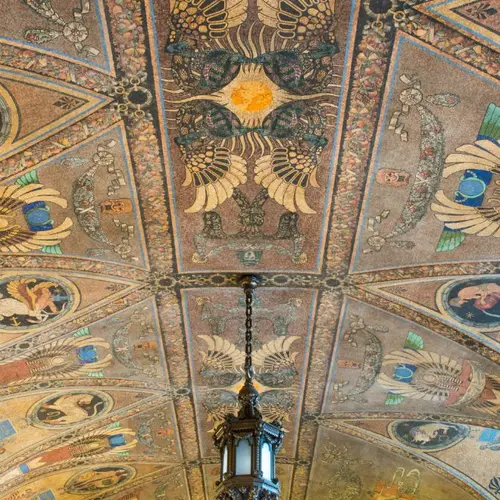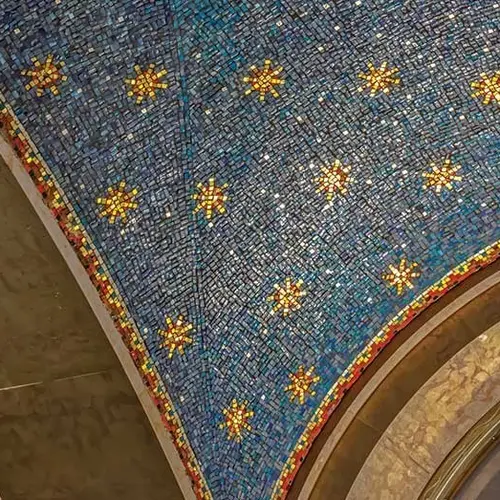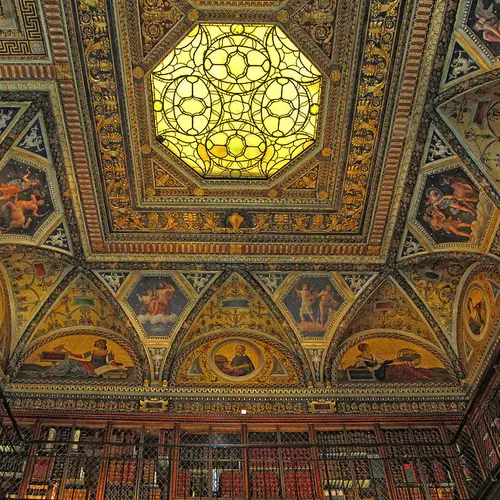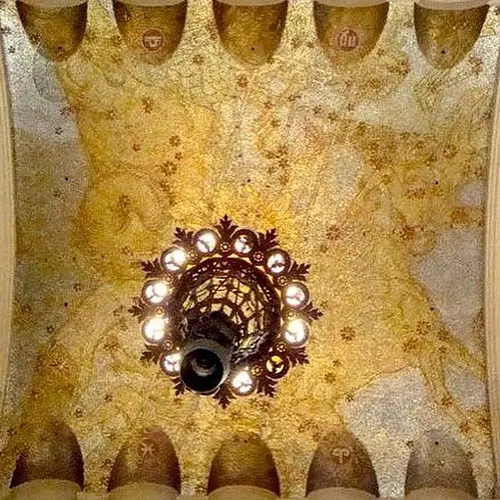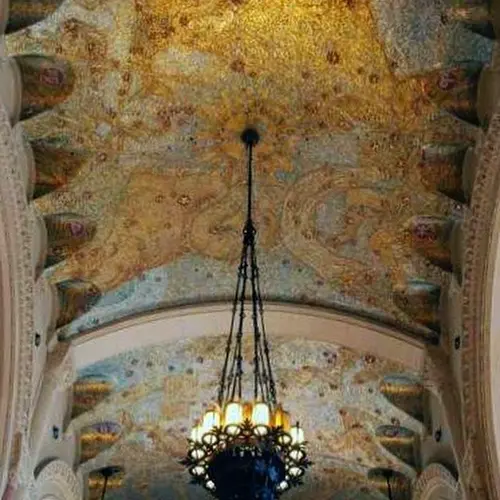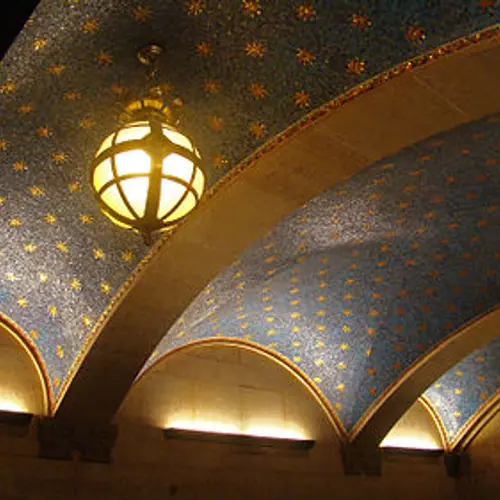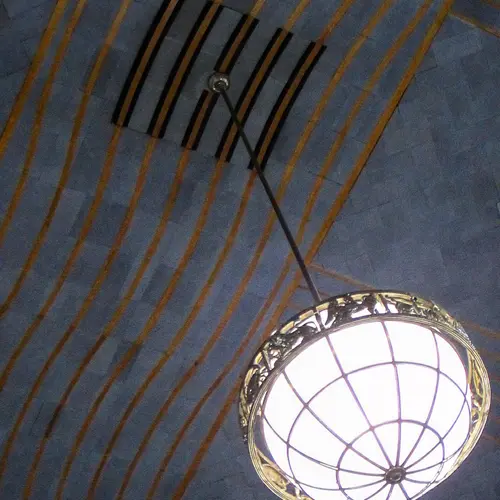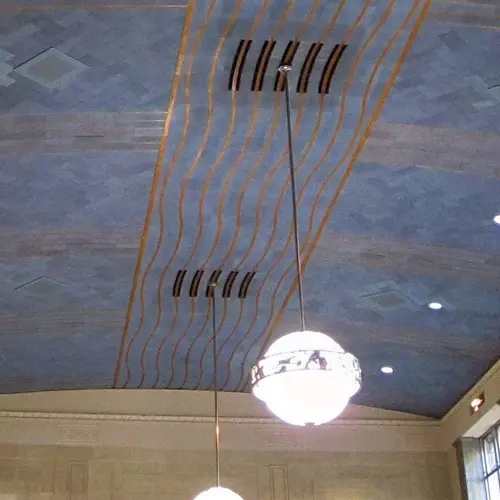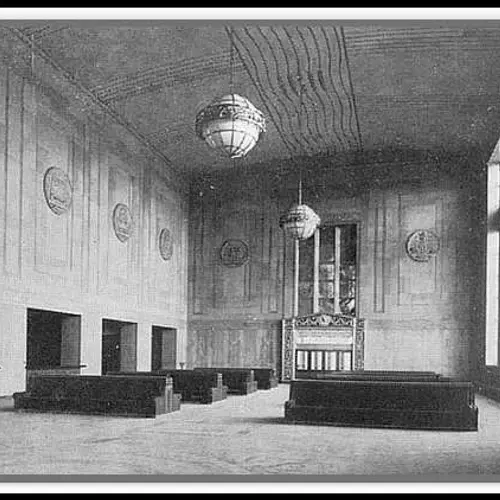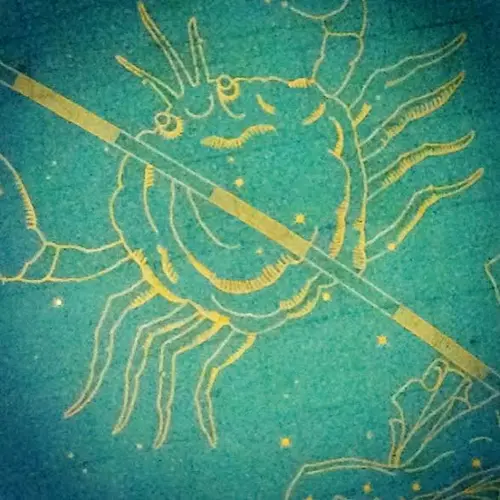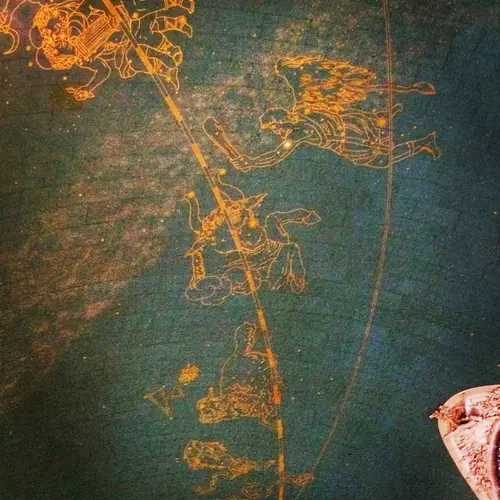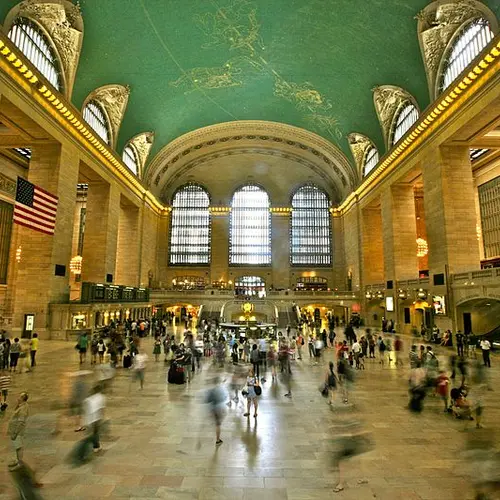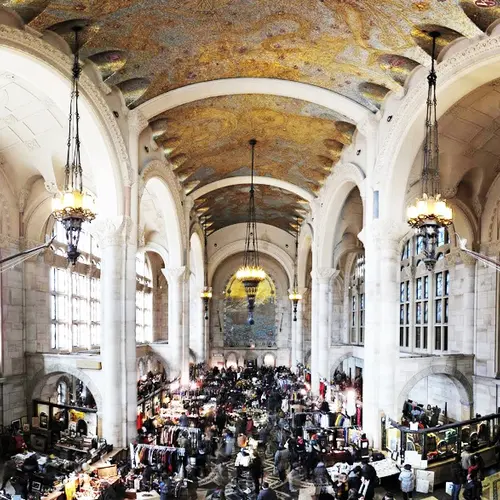Star Power: Celestial ceilings and zodiac symbols in New York architecture
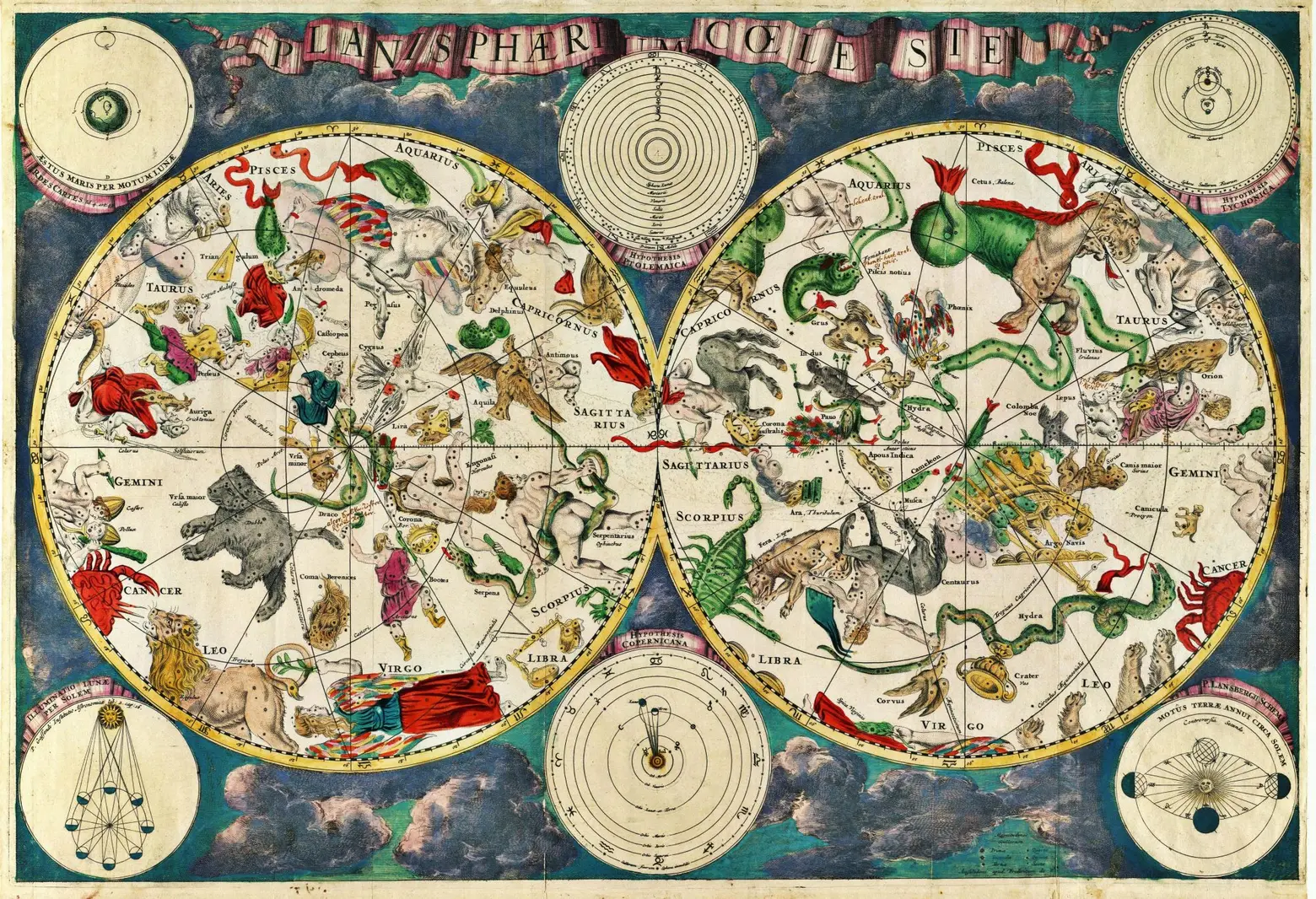
These days if an architect were to ask a developer “What’s your sign?” they probably wouldn’t be taken very seriously. But in the early 1900s, it was an entirely different story.
A century ago, wealthy industrialists, bankers, businessmen and civic planners were erecting opulent buildings with the help of top architects and artists. And in addition to elaborate ornamentation, celestial ceilings with zodiac symbols were also requested in a number of iconic building designs. Ahead we point out six historic New York area buildings where you can still encounter these astral vestiges.
***
Long before the Dutch arrived in New Amsterdam and brought exciting things like brownstones with useful stoops, ancient civilizations were trying to devise rational ways to measure the irrational concepts of space and time. Since they had more time on their hands than today’s horologists, watching the sun, moon and stars was as good a place as any to start.
The origin of zodiac symbols is believed to have come from Babylonians. The Greeks later adopted them with some small changes, like dropping off the thirteenth sign. From there, the twelve remaining symbols made their way into other cultures around the world.
As it goes, each zodiac symbol coordinates with a constellation in the sky, the constellations themselves providing a celestial coordinate system (a stable point of reference) that travels through the sky at the same time every year. Essentially the zodiac is the circle of twelve 30-degree divisions of celestial longitude—the apparent path of the sun across the celestial sphere over the course of the year.
In terms of architecture, zodiac symbols were already being used in other parts of the world appearing in the ornate ceilings, floors and the stained glass of churches and cathedrals, like the Chartres Cathedral in France built in the 12th century. In the early 1900s they became more visible in New York and are still apparent if you know where to look for them.
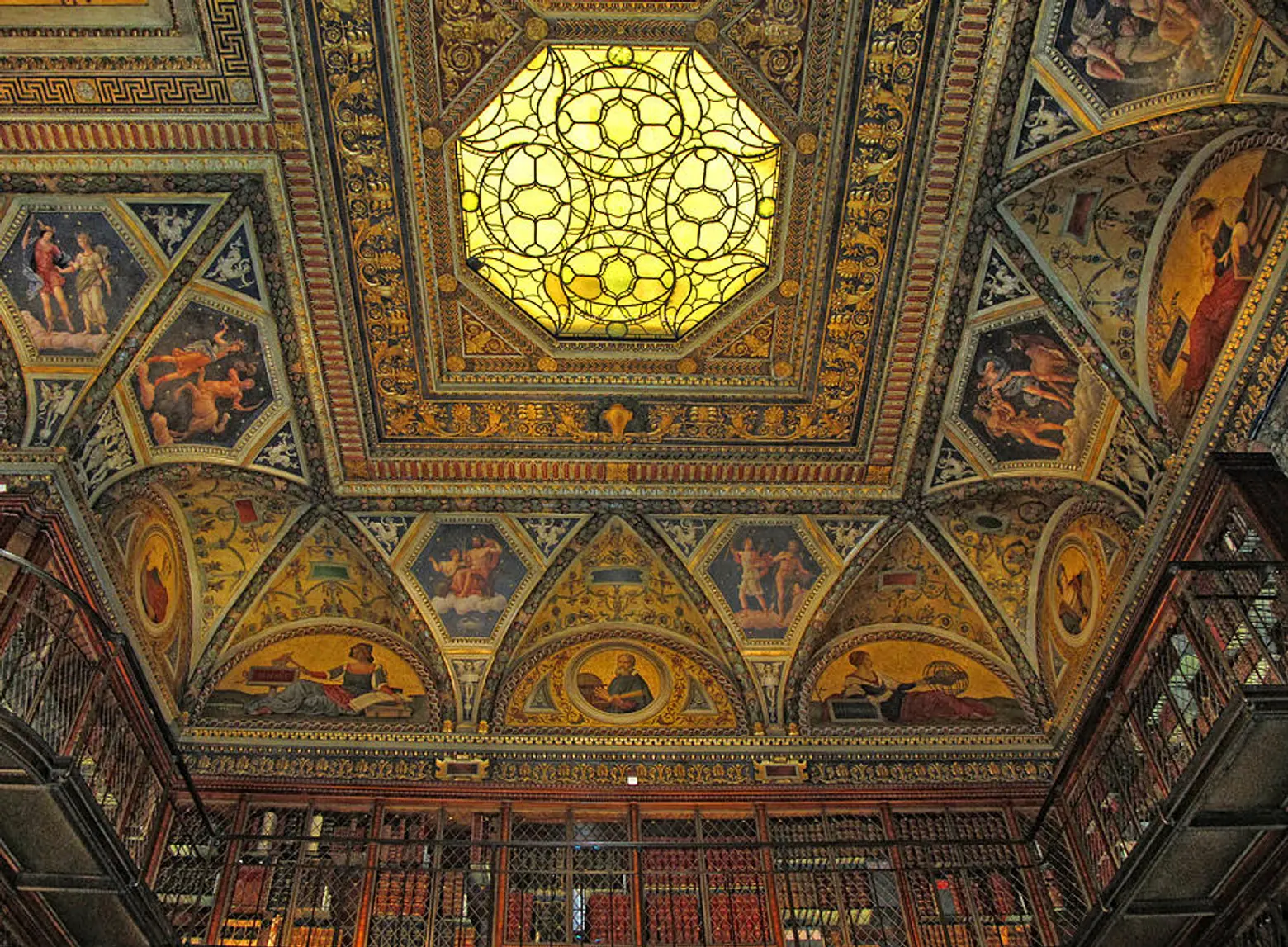 Morgan Library, built 1906. Ceiling detail, 2014. Photo: Baruch College, via Medieval.org
Morgan Library, built 1906. Ceiling detail, 2014. Photo: Baruch College, via Medieval.org
The Morgan Library
In 1906 Pierpont Morgan had a personal library built to accommodate his growing collection of books, historic manuscripts, medieval works of art, along with old master drawings and prints. Designed by Charles McKim from the architecture firm of the day, McKim, Mead & White, the library epitomized America’s Gilded Age.
The result was an Italian Renaissance-style palazzo with three stunning rooms of both size and elaborate interior design. The scheme by H. Siddons Mowbray’s for the lunettes incorporated two series of figures: representations of muses and their attributes (copied from the Church of Santa Maria del Popolo in Rome) and cultural luminaries of the past.
Starting on the right of the fireplace, cultural luminaries include Dante Alighieri (comedy) Sandro Botticelli (painting), Michelangelo (architecture), Antonio da Sangallo (poetry), Socrates (history), William Caxton (music), Herodotus (science), Galileo Galilei (astronomy) and Christopher Columbus (tragedy).
Adding to the intricate ceiling, zodiac signs accompanied by their ruling deities from the Roman calendar appear in the hexagonal spandrels above the men and their muses. The zodiac signs on the ceiling were arranged according to their influence on Morgan. The two isolated signs above the doorway are Aries and Gemini which correspond to his birthday and the date of his second marriage. For Morgan, the placement symbolized walking past his two lucky stars each time he entered the room. Opposite Aries is Libra, the sign Morgan assumed as a member of the “never secret, only private” Zodiac Club, and opposite Gemini is Aquarius, the sign his first wife passed away under.
Eleven years after Pierpont Morgan passed away his son J.P. Morgan, Jr. decided it should be available to all. It was turned into a public library in 1924 and remains open to the public.
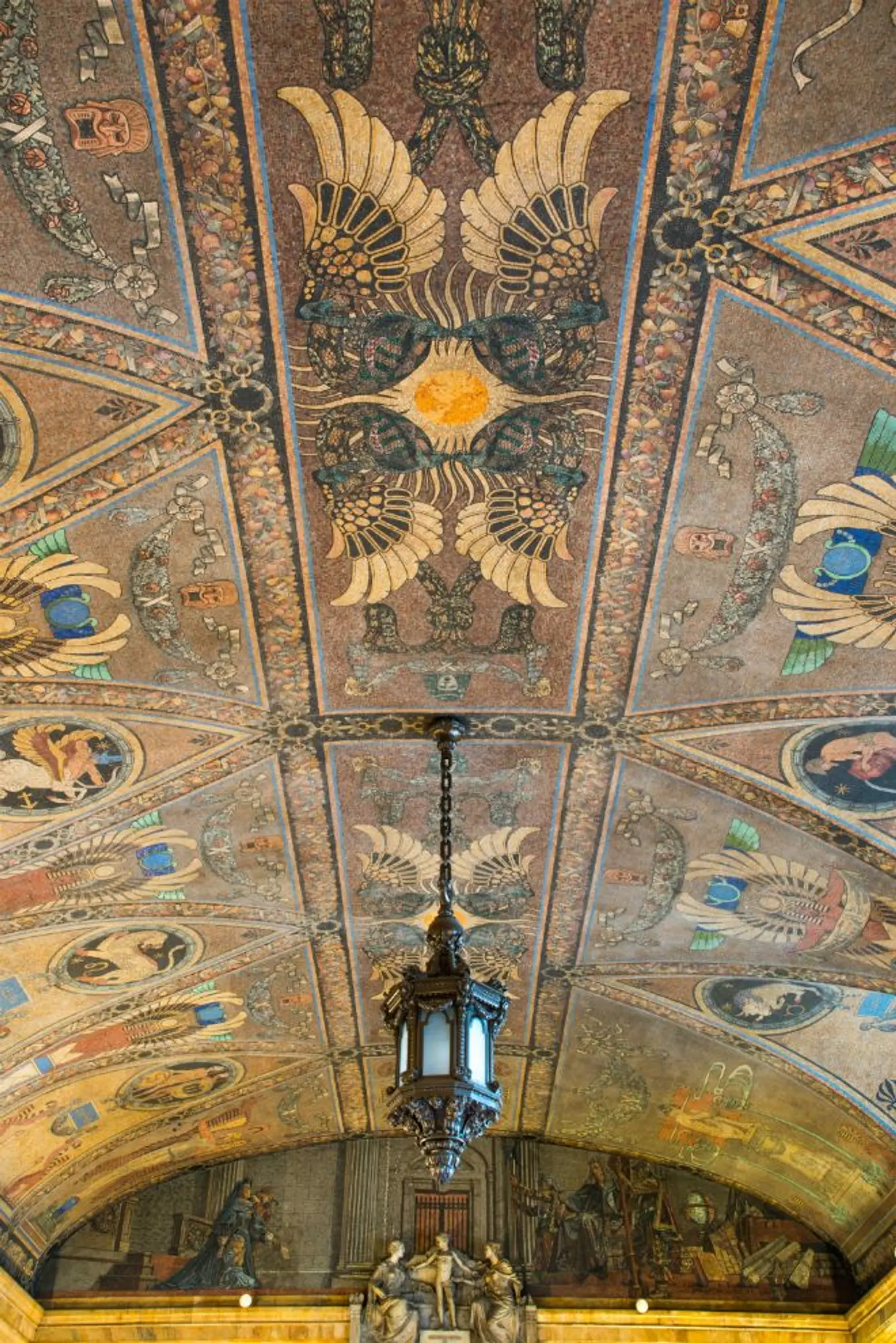 Surrogate’s Courthouse entrance, mosaic ceiling detail. Photo by Larry Lederman, NYSID
Surrogate’s Courthouse entrance, mosaic ceiling detail. Photo by Larry Lederman, NYSID
The Surrogate’s Courthouse
The year after the Morgan Library was built, the Surrogate’s Courthouse was completed in 1907. Originally called the Hall of Records it is still considered one of the finest examples of Beaux-Arts architecture in the city. The austere exterior seems to protect the lavish interior – a level of opulence not usually found in civic architecture. Designed by John R. Thomas, the atrium is highly decorated and covered with pink, beige and sienna marble carvings, capped by an arched bronze skylight. With the stoic appearance and warm lighting, the atrium has become a TV star in its own right with frequent appearances on Law and Order’s SVU series.
Often overlooked, the glittering ceiling of the main entrance is the opening act for the spectacular atrium. Glass tiled mosaics depicting stylized zodiac symbols and ancient deities were designed by William de Leftwich Dodge, who also worked on the Algonquin Hotel. You can check this area out by entering from Chambers Street but if you want to go into the atrium you’ll need to pass through a security check point with a reason for your visit.
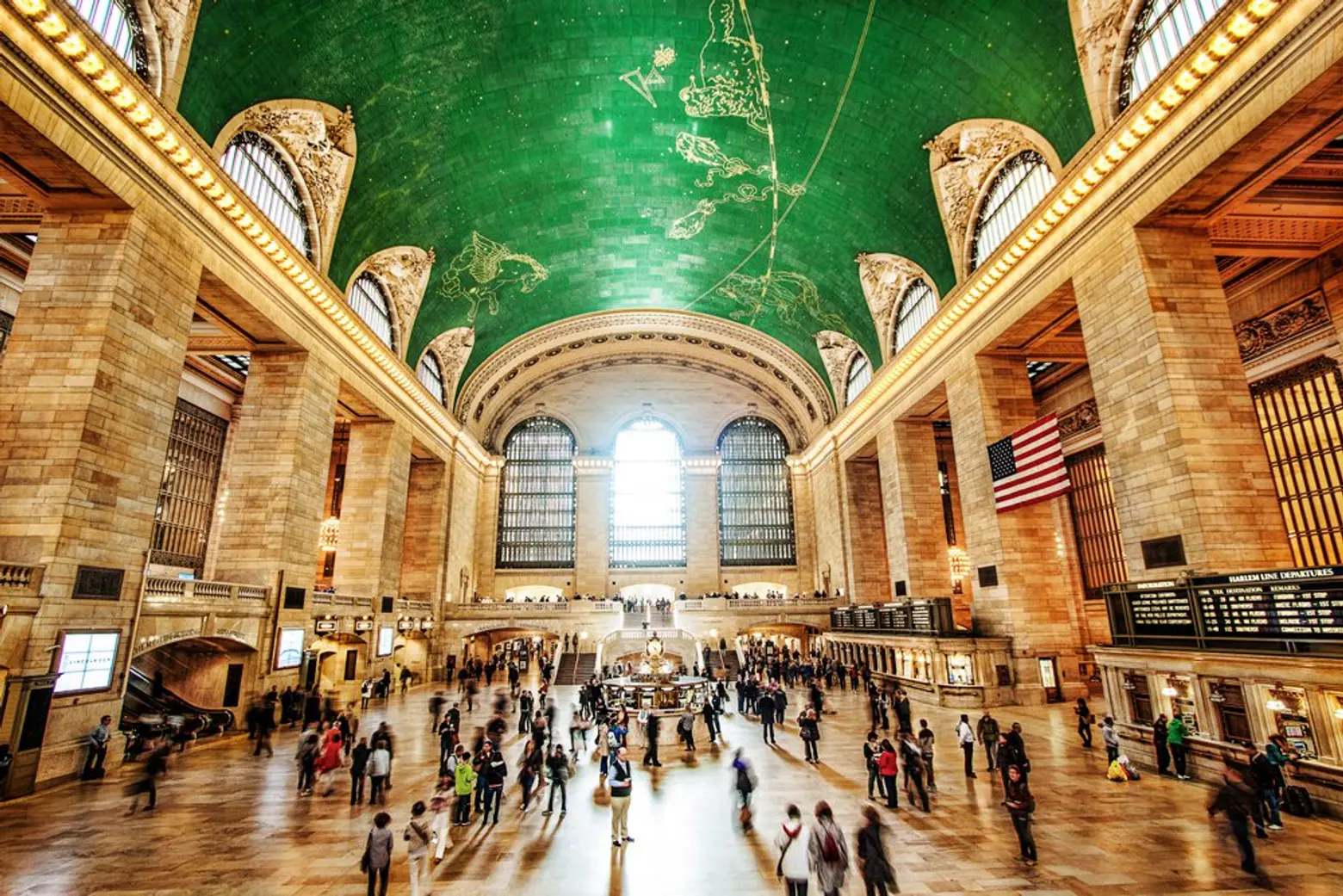 Grand Central Station, NYC. Ceiling w/zodiac symbols. Photo: WikiCommons
Grand Central Station, NYC. Ceiling w/zodiac symbols. Photo: WikiCommons
Grand Central Terminal
The belle of the celestial ball arrived in 1913 as Grand Central Terminal, a transportation and architectural masterpiece. One of the most iconic landmarks in New York, the elaborately decorated ceiling of the main concourse was the collaboration of artists, astronomers and painting assistants.
There has long been chatter of the constellations of being laid out incorrectly from an earthly view but correctly from a heavenly view. The heavenly view was often used in medieval art. There is also confusion about its accuracy, as Taurus and Gemini are reversed in their relationship to Orion, meaning they were painted from a heavenly view and Orion was painted from the earthly view.
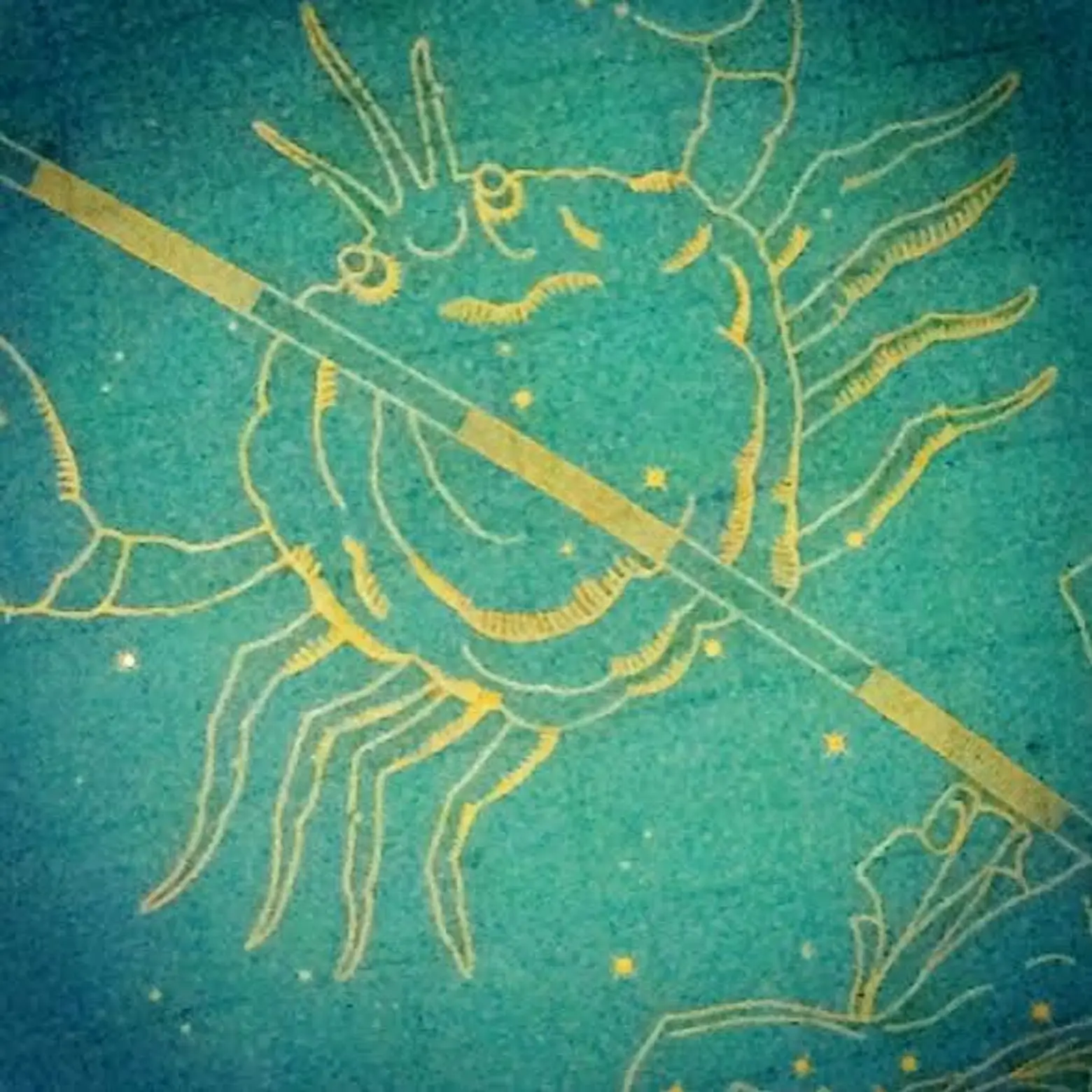 Grand Central Station. Detail of ceiling, Cancer zodiac symbol 2016
Grand Central Station. Detail of ceiling, Cancer zodiac symbol 2016
Whether or not the astronomical charts were intentionally misinterpreted is still unclear. But with no interest in rewriting history, the ceiling has never been changed by officials to correct the constellations. And with plaster repairs made in 1930 and a 12-year restoration effort undertaken in the 1980s, Grand Central remains a sublime example of a ceiling used as a canvas for representing the concept of time and space.
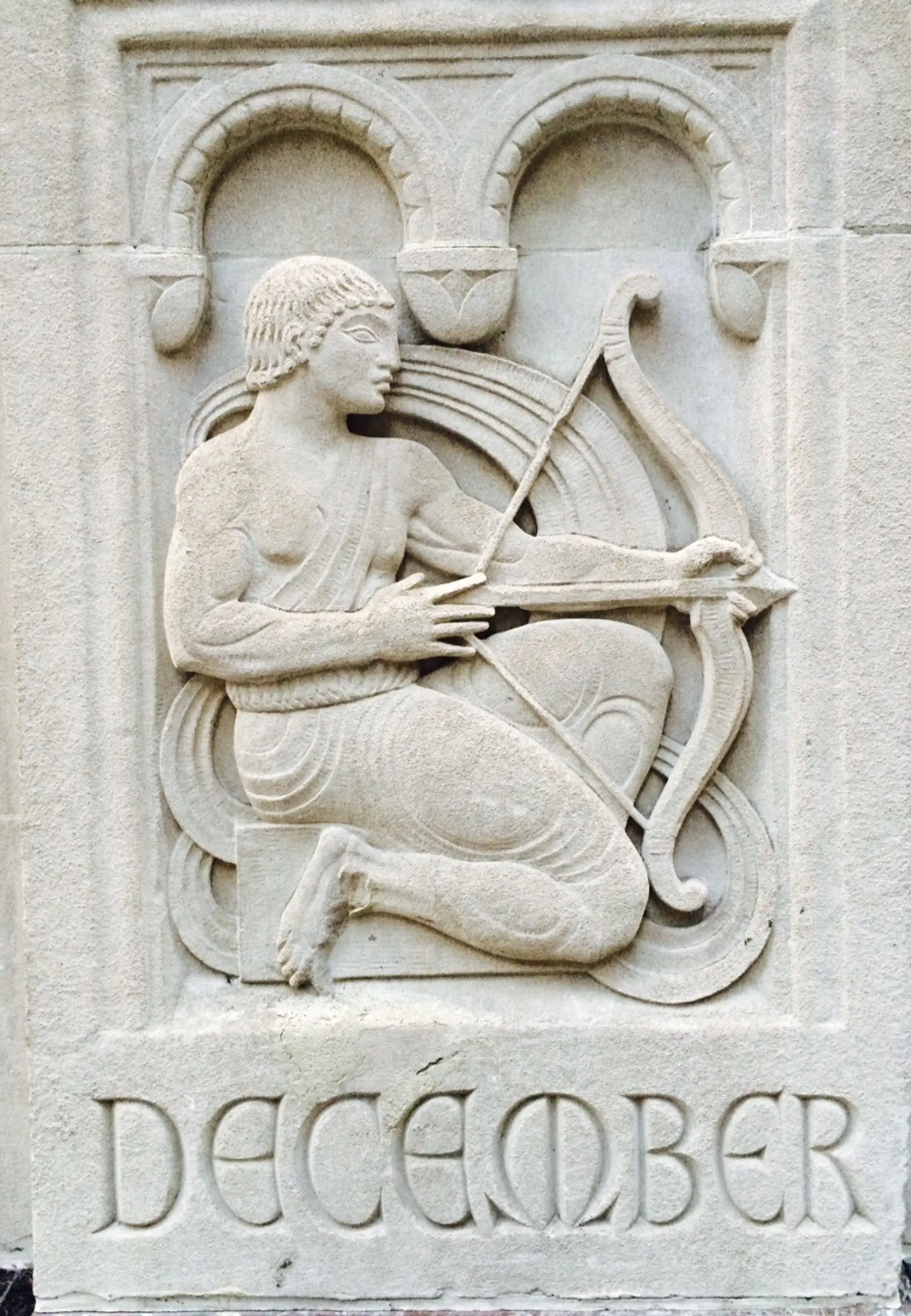 Salmon Tower (11 West 42nd St). Detail of facade ornamentation – December w/zodiac symbol. Authors photo, 2016
Salmon Tower (11 West 42nd St). Detail of facade ornamentation – December w/zodiac symbol. Authors photo, 2016
The Salmon Tower
The Salmon Tower was designed by York & Sawyer, another one of New York’s early top architectural firms, and completed in 1927. The formal name was dropped and now it is referred to simply by its address 11 West 42nd Street.
The H-shaped building sits in the middle of the block so 43rd street is accessible by continuing north through the lobby, which is also noteworthy because of its blue Guastavino ceiling tiles. The façade on both sides of the building include bas-reliefs representing each month and their corresponding zodiac signs.
You can enter the lobby freely from 42nd or 43rd, but will need to pass a security checkpoint to get on the elevators. The building doors are also recessed from the facade making this is an open public place to wait for someone or ride out the rain.
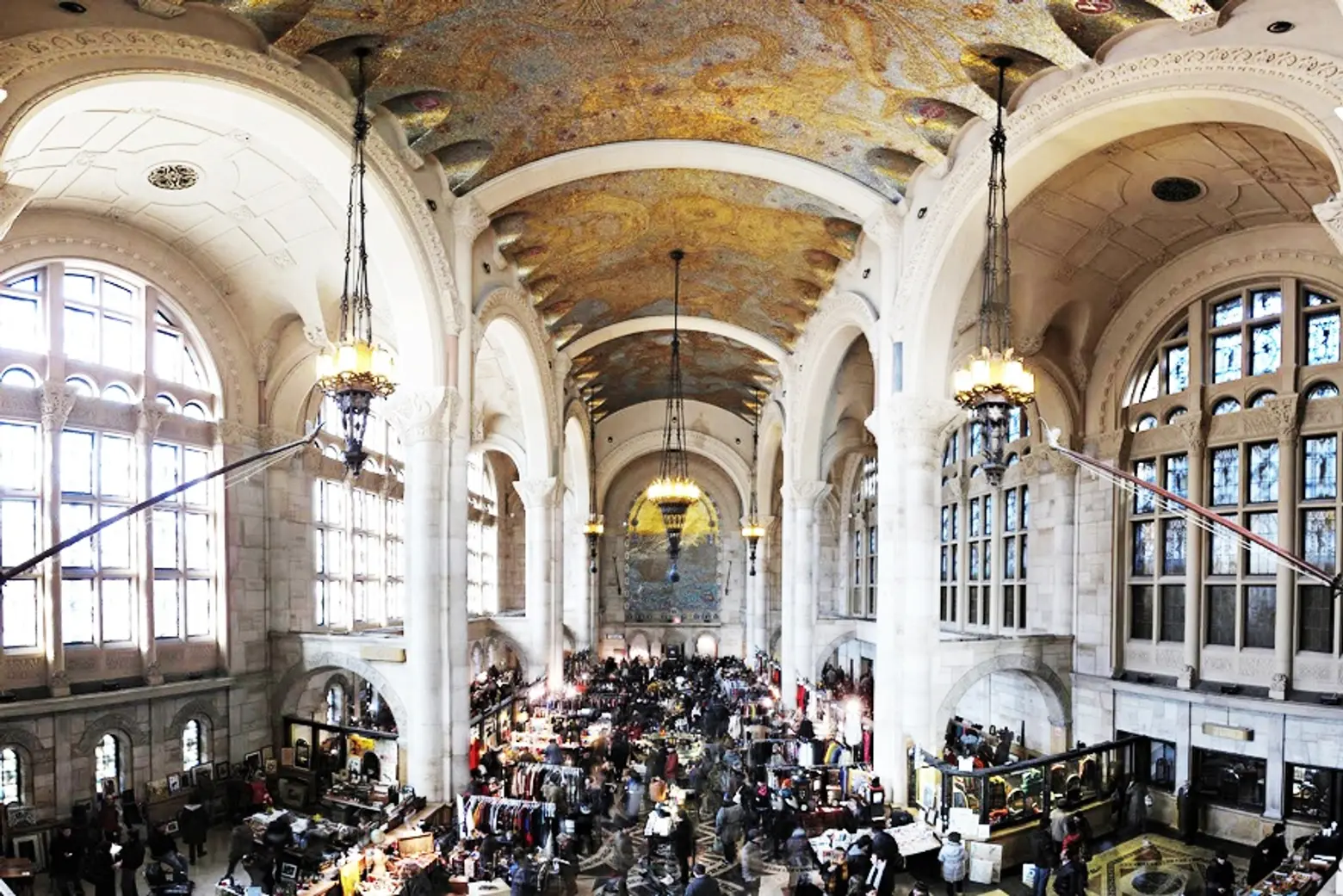
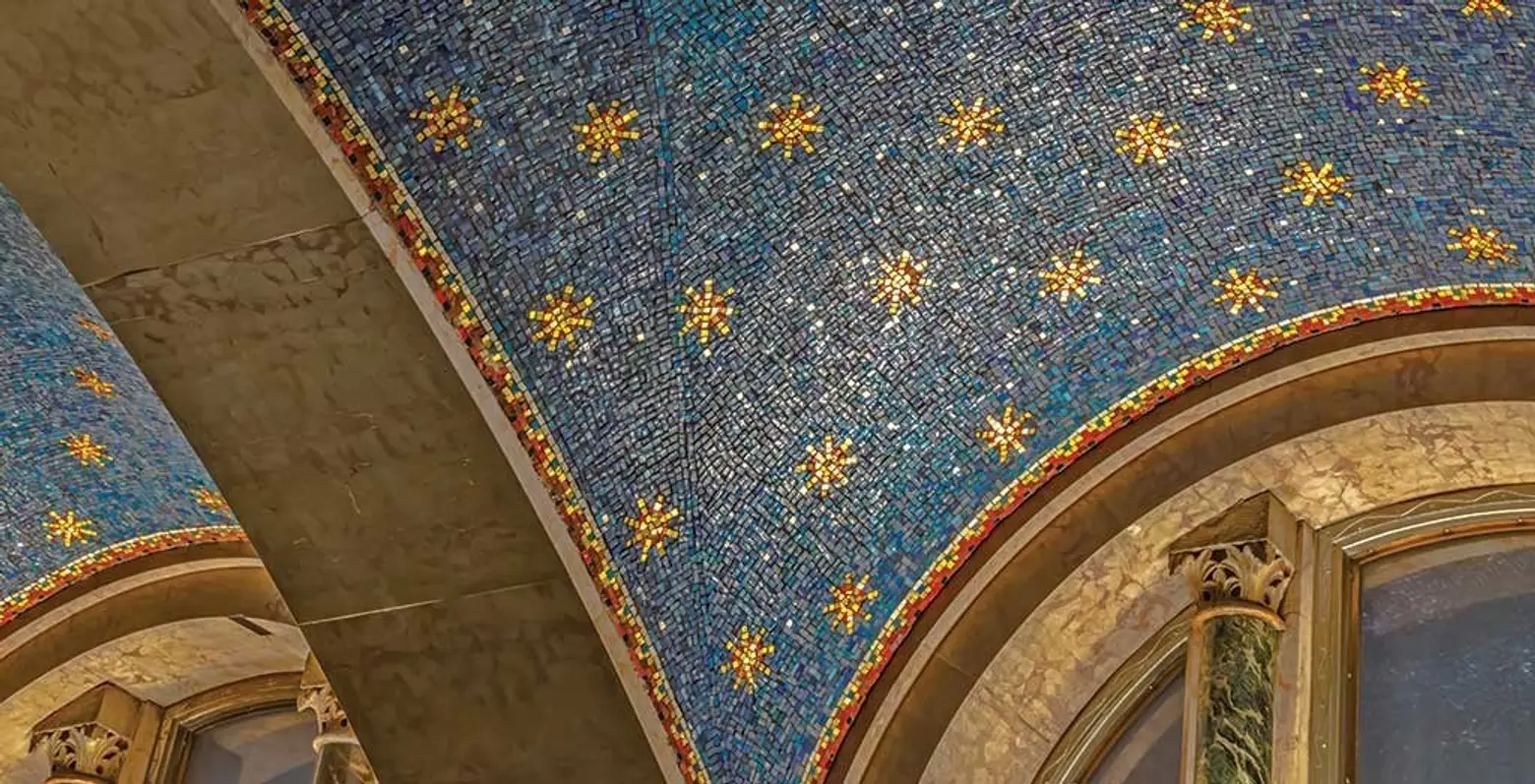 bottom: Williamsburgh Savings Bank Tower, detail of blue ceiling mosaic. Photo: Larry Lederman and NYSID
bottom: Williamsburgh Savings Bank Tower, detail of blue ceiling mosaic. Photo: Larry Lederman and NYSID
The Williamsburgh Savings Bank Tower (a.k.a. One Hanson Place)
The Williamsburgh Savings Bank Tower in Brooklyn was built 1929 and continued the celestial trend of the time. Representing the heavens, a blue groin-vaulted mosaic ceiling arches over the lobby. Punctuated by gold mosaic stars the area is a visual introduction to the colossal 63-foot-high banking hall.
The soaring ceiling was painted by Angelo Magnanti and is a muted rendition of zodiac constellations with their mythological figures in gold. In the vaults on either side of the arched painted ceiling mosaics of zodiac signs can be seen, although not easily. The metallic ceiling feels light and airy which can cause one’s perception of the immense vertical space to warp.
At one end of the hall, a wall mosaic depicts early settlements in Kings County including Breuckelen (Brooklyn), Boswijck (Bushwick) and Midwout (Flatbush).
Most recently recognized as the location for the Brooklyn Flea market, the space is now dedicated to events and the upper floors have been turned into 178 market-rate residential units branded as One Hanson Place.
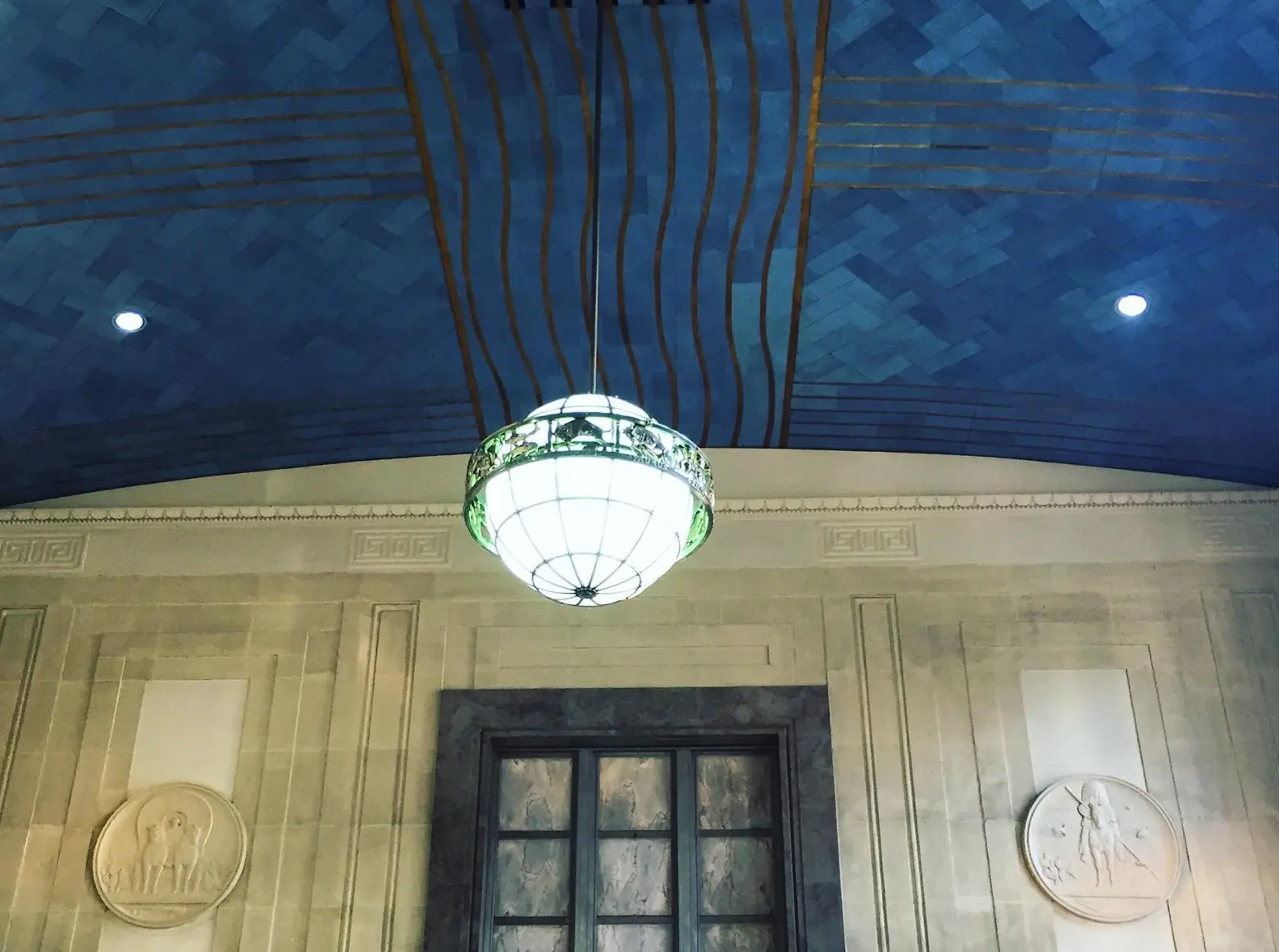 Pennsylvania Station, Newark, NJ. Photo by Jerome Gouvernel, 2016
Pennsylvania Station, Newark, NJ. Photo by Jerome Gouvernel, 2016
Pennsylvania Station in Newark, New Jersey
The other Pennsylvania Station in Newark, New Jersey has a spectacular art deco waiting room worth an in-person visit because clear photos of the zodiac wrapped globes are hard to come by. When it was completed in 1935, the station boasted 232 trains between Newark and NYC running on a daily basis. Typical of art deco design, the evolution of transportation found its way into the ornamentation, and includes things like a canoe, covered wagon, electric locomotive and airplane.
The ceiling is covered with blue Guastavino tiles in a herringbone pattern dissected by undulating brass lines embedded into the tile. The twist away from the modern architectural style can be found in the zodiac symbols that encircle each of the four globe chandeliers. Made from opal glass, each chandelier weighs 800 pounds but the streamlined design makes them appear weightless.
This celestial ceiling is more abstract mostly because of its simplicity which is not seen in the other buildings but the elements are still there. The blue ceiling represents the sky, four globe chandeliers could be interpreted as the sun or moon and/or the four seasons, and the zodiac symbols connect earth and the cosmos. As with Grand Central, using zodiac symbolism to quantify time and space seems to work well in the transportation hub.
***
The connection to the cosmos, ideas of time and space, and an awareness of ancient zodiac symbols were important design elements in the past. They may have slipped to the side, as with so many other historic symbols (pineapples, cornucopia, lions, owls, Roman gods, gargoyles), but at least you can still spot some of these remnants in New York and New Jersey.
RELATED:
